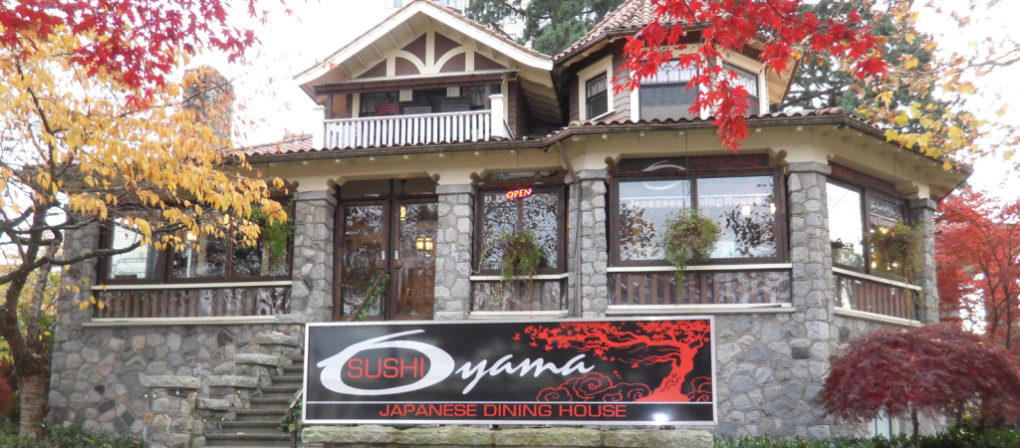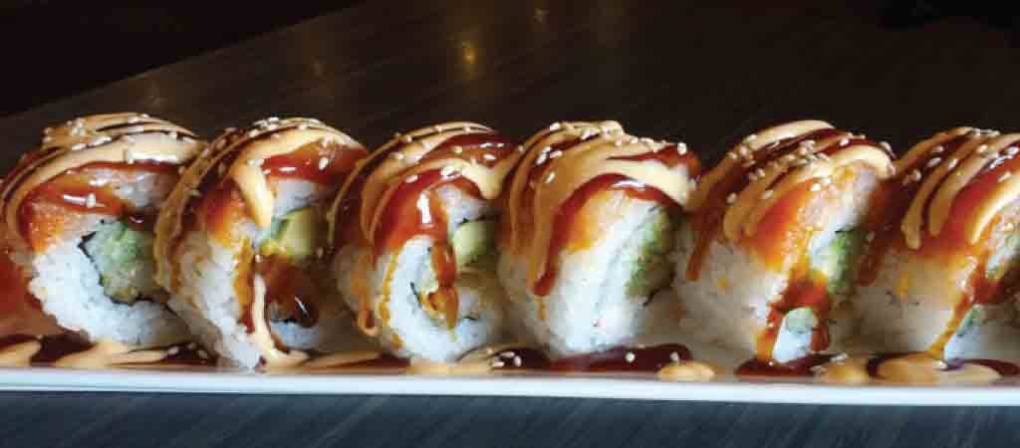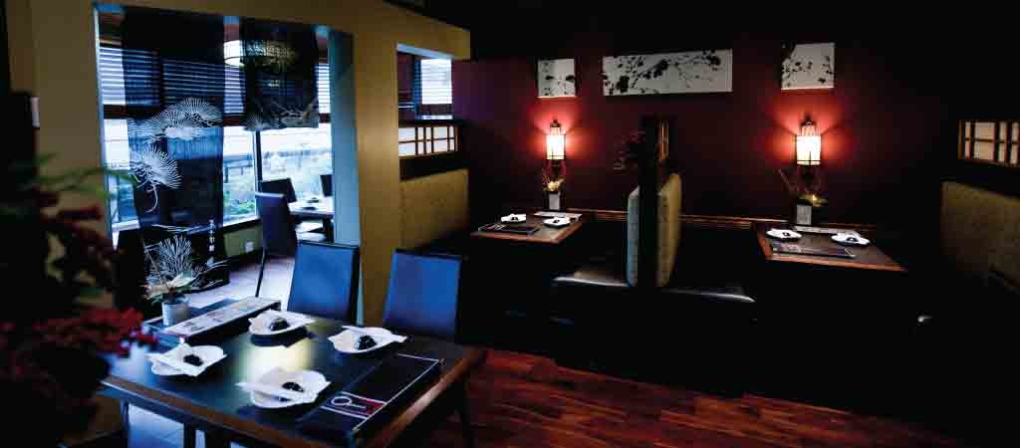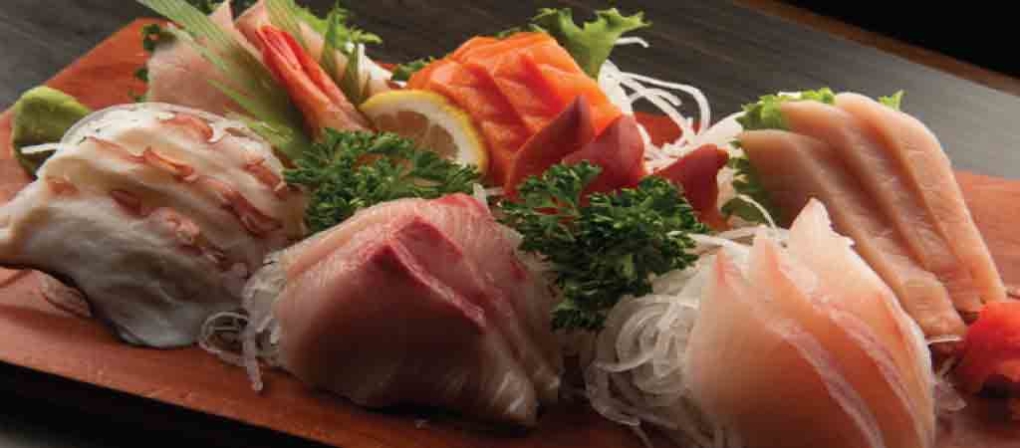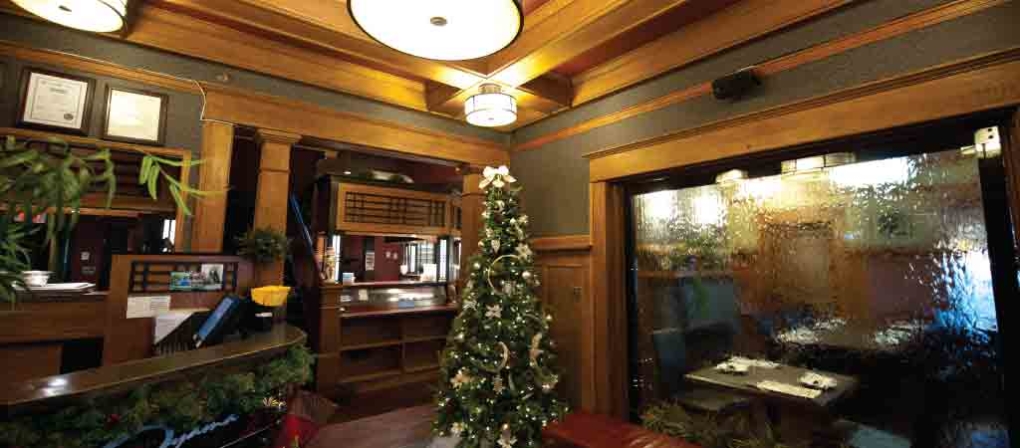Andrew M. Johnson House “Glenedward” – 1910
5152 Kingsway, Burnaby, BC.
Andrew Johnson was a native of Norway who came to Vancouver in 1886. In 1910 he purchased Burnaby’s Royal Oak Hotel and soon acquired the property on the opposite corner to build his home ‘Glenedward’. The mansion was constructed in the Arts & Crafts style and cost in excess of $35,000.00. All of the granite blocks used in the construction of the home’s walls, chimneys, and fences were reputedly obtained from two large boulders on the property that were remnants of ancient glacial activity. The house was built with beautiful oak and walnut millwork and stained glass windows. Two tons of red clay tile were imported from Holland to clad the unusual roof with its oriental styled pagoda turret. Andy Johnson died in this home in 1934 and his wife remained here until 1943 when she sold the estate. It was purchased in 1946 by Charles Aitchison who remodelled the home as the Royal Oak Funeral Home which operated until 1981. The house became part of the Burlington Square Development and was preserved along with three sequoia trees and the granite walls and gates with a heritage land title covenant approved by the City of Burnaby in 1981.
City of Burnaby Heritage
Description of Historic Place:
Glenedward is a large, one and one-half storey plus above-ground basement wood-frame mansion on a rubble-stone granite foundation with a red terra cotta pantile roof and an octagonal corner turret. The building stands in a prominent location on a corner lot on Kingsway, one of Burnaby’s main transportation and commercial corridors, and stands adjacent to the Burlington Square Development.
Heritage Value:
Glenedward is a valued representation of a prominent upper middle-class family dwelling from the pre-First World War era. Andrew M. Johnson (1861-1934), an early Vancouver pioneer, and his wife Margaret built this house in 1912, in an imposing style favoured by the newly wealthy of the prewar boom period. Born in Norway, Andrew Johnson arrived in Vancouver just months after the Great Fire of 1886 and went into partnership with J. (Ollie) Atkins in a transportation company that became the Mainland Transfer Company, eventually the largest of its kind in Vancouver. Johnson also operated Burnaby’s historic Royal Oak Hotel, once located on the opposite corner from his estate.
Additionally, Glenedward is significant for the high-quality design and construction of both the house and its landscaped setting. Designed in the British Arts and Crafts style, the house exhibits a rare degree of opulence in building materials, including imported terra cotta roof tiles, oak and walnut interior millwork, and stained glass manufactured by the Royal City Glass Company. The rubble-stone foundations and perimeter walls were obtained from two massive granite glacial erratic boulders found on the property. The house has been relocated closer to the corner, but the encircling stone walls, the gate posts and gates manufactured by the Westminster Iron Works and some of the original plantings have been retained. A grouping of three giant Sequoias, other mature deciduous trees and massings of shrubbery indicate the type of landscape setting considered appropriate for an estate house in the early years of the twentieth century.
Source: Heritage Site Files, City of Burnaby, Planning and Building Department
Character-Defining Elements:
Key elements that define the heritage character of Glenedward include its:
- corner location on Kingsway at Royal Oak Avenue
- residential form, scale and massing as expressed by the one and one-half storey height, above-ground basement, octagonal corner turret and rectangular plan
- British Arts and Crafts details such as the use of natural indigenous materials, half-timbering in the gables and dormers, picturesque roofline, cedar shingle siding, extended eaves, native granite rubble-stone foundation with red-coloured mortar, and granite piers and chimneys
- additional exterior features such as the central front entrance, elaborate wrap-around verandah, porte-cochere and balcony at second storey lighted with original cast iron electric lanterns
- red terra cotta pantile roof cladding
- fenestration, such as double-hung 1-over-1 wooden-sash windows with stained glass and leaded lights in the upper sash
- original interior features such as fireplaces, wainscoting finished with oak and walnut millwork, and three-quarter sawn oak flooring
- associated landscape features including three giant Sequoias, granite walls, granite gate posts and wrought iron gates

